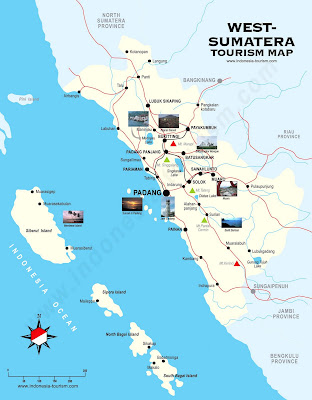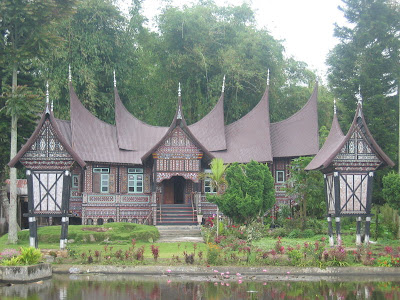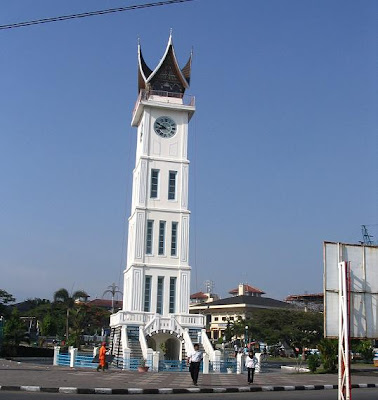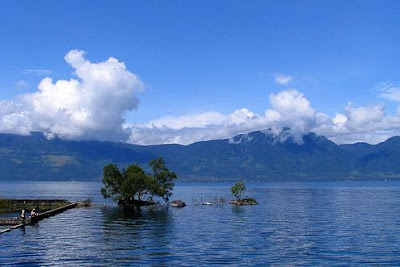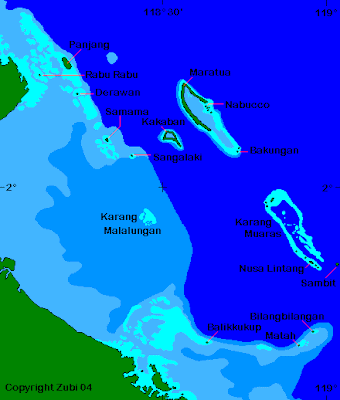Where nature tourism is integrated with conservation efforts
Indonesia, as a tropical island national, has around 17,500 islands with a coastline totaling 81,000 kilometers – a distance equal to twice the circumference of the earth. With this extensive coastline, Indonesia has the world’s greatest mangrove forests: 4.5 million hectares, or a quarter of the world’s total. Bali alone has 2,215 hectares of mangrove forest in various places, and one of the largest is in the Tanjung Benoa area. Mangrove (in Indonesian, bakau) is the name used for a wide variety of trees that grow in seawater tideland areas. Indonesia has around 89 species of mangroves, 30 of which are found in Bali.
 Until recently, the public has thought of mangroves as no more than a type of coastal tree with various economic uses. Actually, mangrove forest have many functions, such as protecting the coasts from abrasion by waves, preventing erosion of soil that then washes away into the sea, providing a habitat for marine biota, capturing CO2 and producing O2 - oxygen – which is needed by humans and other living creatures. Mangrove forests can also be developed as ecotourism venues, with the mission of promoting proper management and conservation of the environment.
Until recently, the public has thought of mangroves as no more than a type of coastal tree with various economic uses. Actually, mangrove forest have many functions, such as protecting the coasts from abrasion by waves, preventing erosion of soil that then washes away into the sea, providing a habitat for marine biota, capturing CO2 and producing O2 - oxygen – which is needed by humans and other living creatures. Mangrove forests can also be developed as ecotourism venues, with the mission of promoting proper management and conservation of the environment.The journey started at the Mangrove Information Center (MIC), founded in 1993 by the Department of Forestry with the assistance of the Japan International Cooperation Agency (JICA) and located at Jalan Bypass Ngurah Rai, km 21, just 15 minutes from Kuta, or 20 minutes from the center of Denpasar. As you enter the area, you encounter a green panorama of mangrove forests along both sides of the road. This green belt plays an important role as the “lungs” of the city. The project emerged from concern over the large-scale destruction of these forests. Mangrove forests have rapidly been degraded through conversion into fish or shrimp cultivation ponds, rice fields, harbors, and industrial zones, and by excessive felling for various purposes. The project provides a venue for training, outreach, and education regarding sustainable management of the mangrove forest ecosystem, and also for ecotourism activities.
Head toward the Mangrove Trail, first, there is mangrove nursery, which provides seedlings for the mangrove forest rehabilitation process. Next is the Touch Pool, where visitors, students and families can learn about the environment through direct experience. There are two trails to choose from - a short route of about one hour, and the other, a longer route of nearly two hours.
 Starting from the entry point to the Mangrove Trail, at a small structure called the Pond Heron Hut, the path is comprised of sturdy bridges made of Borneo ironwood (ulin), to prevent damage to the environment. The Mangrove Trail is 2150 meters long, 1850 meters of which is wooden bridges. Posted at the trailhead are a map of the trail and a notice reminding visitors about what activities are prohibited in the area. The trail is clearly marked at all points, so there is no risk of getting lost.
Starting from the entry point to the Mangrove Trail, at a small structure called the Pond Heron Hut, the path is comprised of sturdy bridges made of Borneo ironwood (ulin), to prevent damage to the environment. The Mangrove Trail is 2150 meters long, 1850 meters of which is wooden bridges. Posted at the trailhead are a map of the trail and a notice reminding visitors about what activities are prohibited in the area. The trail is clearly marked at all points, so there is no risk of getting lost.A walk along the wooden bridges, enjoying the greenery of the mangrove forests, is very pleasant indeed; it provides both recreation and an excellent opportunity for children to learn to love nature. Signs along the trail provide information about the various types of mangrove trees and the other creatures that live in the forest. There is also a tidy wooden rest shelter.
The mangrove roots that rise high above the surface of the marsh in artistic patterns play an important role in preventing coastal abrasion and soil erosion. Unfortunately, the area’s natural beauty is marred by certain people’s littering.
When the tide goes out, dozens of crabs can be seen scurrying along the ground, popping into holes as we approach and emerging again after we have passed. It’s not surprising to see such a variety of marine species there, because the mangrove forest serves as a nursery ground, feeding ground, and spawning ground for many types of fish, shrimp, crabs and other species.
Several creeks pass through the forest, with bridges crossing over them. These streams are an ideal place to explore the mangrove forests. The Mangrove Information Centre Schedules regular boat trips to explore the forests.
There are also several lookout towers, from which we can observe the forest and its birds and mammals. When the weather is clear, one can also see mountains in the distance – Gunung Agung and Gunung Batukaru. You can also watch the various species of birds and mammals, including storks, kingfishers and monitor lizards. It’s a perfect place for those who enjoy bird watching, or just to rest for a while after the walk. Gentle breezes relieve your fatigue and revive you to continue the trek.
The functions and benefits of the mangrove forests can no longer be ignored and it is essential that we preserve them. The many problems that the forests face, such as trash and land conversion, must be mitigated immediately, by raising public awareness. Proper synergy between humans and their natural environment will create tremendous benefits for all of us.
Fore more information, contact: Mangrove Information Centre (MIC) Jl. Bypass Ngurah Rai km. 21, Suwung Kauh, Denpasar, Indonesia
Tel: 62-361-726969, 726546, 728966
Fax: 62-361-710473
Text by I.B. Andi Sucirta. Source: Garuda Mgz



